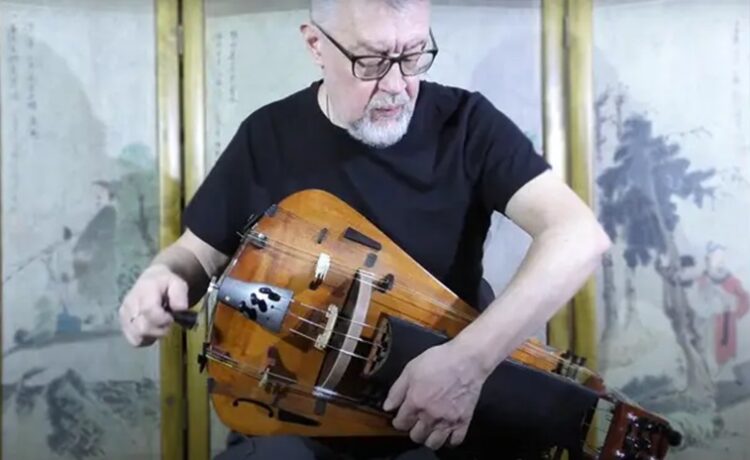Like any other musical instrument, a hurdy gurdy also consists of various parts. These parts work together to produce unique sounds, enabling hurdy gurdy users to create music.
As a hurdy gurdy player, it is good to have an idea of the essential parts of the instrument. In this article, we will give you a brief overview of various hurdy gurdy parts. So, let’s dive in!
-
Tangents
These small wooden wedges on the keys of the hurdy gurdy are crucial. When pressed against the strings, they shorten the string’s length, producing different pitches. They are basically what help create the music.
-
Buzzing Bridge
Ever wonder about that buzzing sound in a hurry gurdy? It’s due to the buzzing bridge! Those little white wooden pieces you see on the supports are called Chien or dogs. They hit the plates, creating that distinctive buzzing sound.
-
Main Bridge
This part is super important. It’s where your melody strings are housed, and it helps transmit vibrations to the soundboard, which is key for producing sound. Some modern main bridges even have thumb wheels to adjust string pressure.
-
Tirant
The tirant is the string connected to your trompette string. When someone says “more tirant,” they mean turn the peg in the instrument’s tailpiece to increase the buzz.
-
Drone Bridge
Positioned on the outer side of the instrument, the drone bridge is essential for creating a continuous drone sound. Drone strings pass over it without being stopped by tangents.
-
Capos
These little levers are handy for quickly tuning up your strings by a whole tone. Place them on drone strings and trompette, and they instantly raise the pitch. For example, if you activate the capo on your C drone, it jumps up to a D. If you have one for C to D on the trompette, make sure to get its counterpart for C to D on the drone position.
Knowing the different parts of a hurdy gurdy helps you understand the instrument better. Each component is important and plays a crucial role in producing music. It is because of these components that a hurdy gurdy offers a rich musical experience to both players and listeners.












